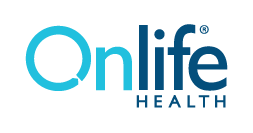Mar 2023 Creating Members for Life: A Consumer-Centric Strategy for Health Plans
Deliver real value for members by taking your engagement to the next level.

The business environment in which health plans operate today has never been more challenging or disruptive. A combination of new competitive pressures, innovative technologies and rising consumer expectations is transforming the health economy at an
unprecedented pace and scale. Now, more than ever, consumers are in the driver’s seat, taking charge of their healthcare and demanding more from their health insurance.
In our last blog post, we set the stage for this discussion by urging health plans to think more like Amazon. But let’s take a more specific look at what it means for a health plan to offer this type of consumer experience, one that is hyper-focused on the care and well- being of the member—personalized, informative, convenient, and easily accessible. How would such an experience influence and strengthen the members’ perception of the health plan as a valuable service and bolster their loyalty to it? In this blog post, we provide an overview of how you can deliver a next-level engagement experience and real value for your members.
MEET JOE
Joe is a 44-year-old engineer recently hired by a company whose health insurance provider has made a robust commitment to member engagement. Let’s follow Joe for the next couple of decades and see how his interactions with his health plan exceed his expectations and make him a member for life.
MAKING AN IMPRESSION
The old adage, “You don’t get a second chance to make a good first impression,” is true for health plans as well as people. That makes the initial enrollment period an opportune time to engage the member and build the foundation for a long-lasting relationship. It starts with an introductory phone call to Joe immediately after he enrolls in the plan. The health plan also
sends Joe an information packet that explains his benefits in clear, concise language, provides multiple two-way communication channels where he can ask questions and encourages him to complete a health assessment and enroll in his employer’s well-being program, which is
provided by the health plan.
GETTING IN THE GAME
Motivated partly by his positive first impression of the health plan, Joe enrolls in his employer’s well-being program. After completing a health assessment, he earns a $50 deposit to his Health Savings Account (HSA). This is just the first in a series of opportunities for Joe to earn cash rewards or points that can be redeemed to acquire additional services or discounts from his
health plan.
SEEING RESULTS
When Joe visits the home page of his well-being engagement program for the first time, he watches a short video that explains how he can maximize the benefits provided by his health plan. He also realizes the page’s content has been personalized with self-guided courses, videos, exercise programs, and other information to help him address his top two health priorities: losing weight and preventing the onset of diabetes. When Joe has trouble sleeping, he consults an educational video that helps him enjoy a good night’s rest. And just before flu season, Joe receives a reminder to get a flu shot and information about the three provider locations nearest him. Motivated by this personalized approach, Joe becomes a frequent user of the well-being program and successfully reaches his health goals.
ADDING VALUE
When Joe turns 45, his well-being engagement program reminds him it’s time for a colonoscopy. The program also provides information, automatically posted on Joe’s home page, that explains the benefits of having a colonoscopy, dispels common misunderstandings about the procedure, and provides a list of in-network doctors who can perform the procedure. A few years later, Joe uses a digital self-guided program, Managing Your Stress, to help him through a particularly stressful time at work.
BUILDING LOYALTY
Joe’s loyalty to the health plan grows stronger. He continues to fund his HSA by completing healthy activities and earning points, and he earns an additional loyalty discount on his health premiums for each year he is a member. During an annual wellness exam, Joe learns that his blood pressure is too high. Because his well-being engagement program is connected to his EHR, Joe’s home page is immediately updated with personalized recommendations and actions to help him bring his blood pressure back to normal.
STAYING THE COURSE
At the age of 63, Joe decides to retire, but he still needs health insurance until he becomes eligible for Medicare. He has now been with the health plan for 19 years. Because of his overall high satisfaction with the plan, the effectiveness of his personalized well-being program in helping him stay healthy, and the transferable points and rewards he has earned and doesn’t
want to lose, Joe decides to stay with the health plan and buy one of its policies through the government’s Health Insurance Marketplace
ENGAGING FOR LIFE
Several years before he turns 65, Joe starts receiving helpful information about making the transition to Medicare, which is automatically posted on his personalized well-being home page. Because he enjoys good health, Joe decides on a Medicare Advantage plan. Once again, because of his overall satisfaction and the 21-year relationship he has enjoyed, Joe stays with the same insurance company. And the chances are good that Joe is now a member for life. That’s because seniors are loyal when it comes to Medicare, and that loyalty increases with age.
Is Joe’s experience currently a reality or a fantasy for your health plan? If this is not the type of consumer-centric experience your members enjoy, now is the time to examine how you can keep pace with member expectations. The Onlife team would love to offer you a no obligation consultation on member engagement and how your plan can advance your efforts in this critical area.
Contact us today for a 1:1 session.

